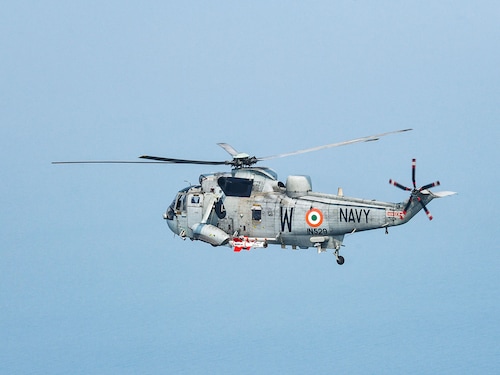Tech5: Nvidia keeps AI frenzy going, India tests anti-ship re-targeting missile,
Forbes India's daily tech news bulletin with five headlines that caught our attention


Nvidia’s strong growth forecast for its fiscal first quarter, on February 26, allayed fears that the booming demand for its artificial intelligence (AI) chips might slow down, and the company said orders for its new Blackwell chips were “amazing", Reuters reported.
Concerns over the sustainability of the spending on the chipmaker’s expensive hardware had increased, especially after China’s DeepSeek released its eponymous large language model and chatbot, trained on a cluster of cheaper processors, albeit from Nvidia, and overall at a much lower cost than OpenAI’s GPT.
With its new chip architecture, Blackwell, Nvidia is transitioning from selling individual chips to full AI computing systems that integrate graphic chips, processors and networking equipment, Reuters noted. Blackwell-related products generated $11 billion in revenue for Nvidia’s Q4, about half of its total data centre revenue—it’s biggest business.
For Q1, the company expects total revenue of $43 billion, plus or minus 2 percent, compared with analysts’ average estimate of $41.78 billion, according to the Reuters report, citing LSEG.
IDC predicts AI spending in India will grow at 2.2x the rate of overall digital technology purchases in the next three years, generating an India economic impact of over $115 billion by the end of 2027. The technology market researcher published its projections in a recent report, Worldwide Digital Business and AI Transformation 2025 Predictions—India Implications.
IDC also forecasts that by 2027, business executives will demand a minimum 70 percent success rate on their generative AI initiatives, to achieve operational efficiencies and drive new revenue growth.
“AI transformation and digital business are locked at the hip. Although digital transformation remains foundational to India"s digital journey, AI is clearly leading the charge as a high-growth priority," Neha Gupta, senior research manager, Digital Business and AI Strategies at IDC India, said in a press release about the report.
Bridgetown Research, an AI startup co-founded in December 2023 by former McKinsey consultant Harsh Sahai, has raised $19 million in a Series A round, co-led by Accel and Lightspeed, TechCrunch reports. The company aims to make due diligence easy by using AI agents to collect, analyse and condense data at a fraction of the cost and time of traditional methods.
Bridgetown’s agents interview industry experts, process data using large language models, and deliver insights within 24 hours. The startup targets private equity, venture capital and consulting firms, claiming to offer a more complete solution than competitors like Mako AI and DiligentIQ, according to TechCrunch.
Uber is introducing a ride-sharing service in Assam, allowing private car owners to operate as taxi drivers through its app, the Economic Times reports. This marks a first for India, where such services are restricted to commercially registered vehicles.
The initiative, which will start with women and army veterans as drivers, aims to address the ongoing shortage of ride-share drivers. While other states have not adopted similar rules, Assam"s 2023 regulation allows private vehicles to operate with specific limitations. However, opposition from taxi unions may make expansion challenging, the Economic Times notes. The move follows global trends, where Uber has been allowed to onboard private cars in markets such as the US and UK.
The Defence Research & Development Organisation (DRDO) and the Indian Navy conducted successful flight trials of the first Naval Anti-Ship missile (NASM-SR) from the Integrated Test Range in Chandipur, Odisha, on February 25, according to a defence ministry press release.
Launched from an Indian Navy Sea King Helicopter, the missile demonstrated capabilities by achieving a direct hit on a small ship target in sea-skimming mode. The trials showcased the missile’s Man-in-Loop feature for in-flight retargeting and proven high bandwidth two-way datalink system. Developed by various DRDO labs, the missile uses an Indigenous Imaging Infra-Red Seeker for terminal guidance and solid propulsion.
First Published: Feb 27, 2025, 10:38
Subscribe Now